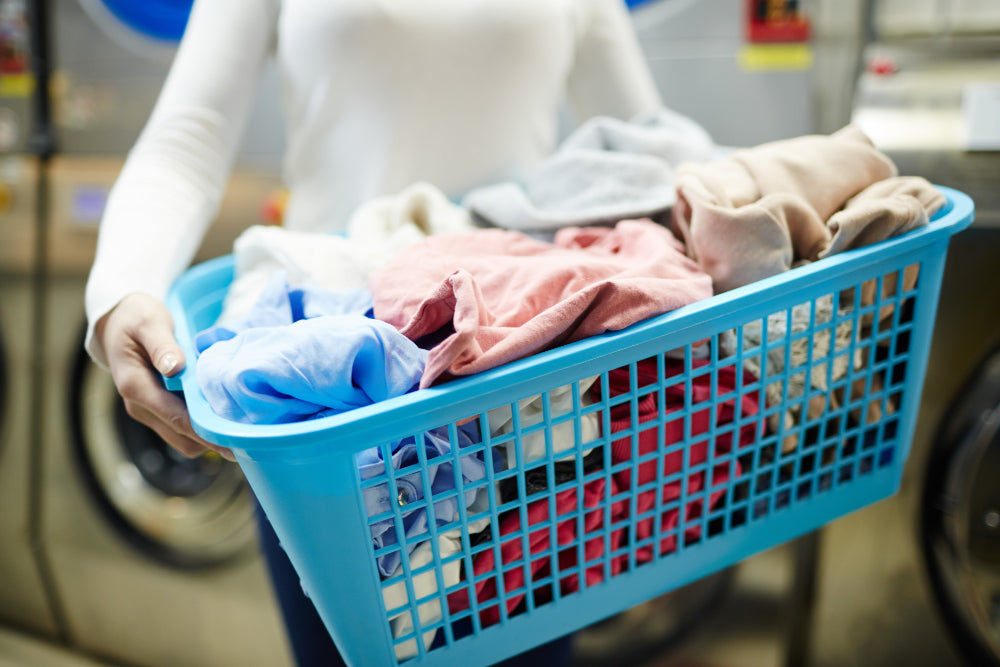Laundry is a routine household chore we all engage in regularly. However, what many people may not realize is the significant role laundry plays in managing allergies. Allergens, including dust mites, pollen, and pet dander, can accumulate in your bedding, clothing, and linens, exacerbating allergy symptoms. In this blog, we will explore the connection between laundry and allergies and provide valuable tips for achieving hypoallergenic laundry that can make a real difference in managing allergy symptoms.

Understanding Laundry Allergies
Laundry allergies are often linked to allergens that hide in our clothing and linens. Here are some common culprits:
Dust Mites: These microscopic creatures thrive in bedding, pillows, and curtains. Their waste particles and shed skin can trigger allergic reactions.
Pollen: If you spend time outdoors, pollen can easily attach to your clothing and be transferred into your home during laundry.
Pet Dander: If you have furry pets, their dander and hair can cling to your clothes, causing allergies.
Mold: Damp laundry left unattended can foster mold growth, releasing spores that can trigger allergies.
Harsh Detergents and Fragrances: Chemicals and synthetic fragrances in laundry detergents can cause skin irritation and allergic reactions.
Tips for Hypoallergenic Laundry
Achieving hypoallergenic laundry is crucial for allergy sufferers. Here are some essential tips to minimize allergen exposure through your laundry routine:
Hot Water Wash - Wash your bedding and clothing in hot water (at least 130°F or 54°C) to kill dust mites and remove allergens effectively. Use a detergent designed for sensitive skin to avoid irritation.
Frequent Washing - Frequent washing, especially for bedding, is essential in preventing the buildup of allergens. Sheets and pillowcases should be washed every one to two weeks, while blankets and comforters can be washed every one to three months.
● Allergen Removal Techniques
● To remove allergens effectively, consider the following:
● Use allergen-proof covers on pillows and mattresses to reduce dust mites.
● Invest in a high-efficiency particulate air (HEPA) vacuum cleaner to remove pet hair and dander from your clothing.
● Regularly clean your washing machine to prevent mold growth.
Hypoallergenic Laundry Detergents - Opt for hypoallergenic laundry detergents that are free from harsh chemicals and fragrances. These detergents are specifically formulated to minimize skin irritation and allergy triggers.
Double Rinse - Ensure a thorough rinse cycle to remove detergent residues that can irritate your skin. Double rinsing is particularly helpful for sensitive individuals.
Natural Fabric Softeners - Avoid conventional fabric softeners that contain synthetic fragrances. Instead, opt for natural alternatives like white vinegar or wool dryer balls to soften your laundry.
Drying Your Laundry - Avoid outdoor drying when pollen counts are high. Use a clothes dryer to ensure your laundry remains free from allergens and pollen. Additionally, clean your dryer's lint trap regularly to prevent mold growth.
Check Labels - Read clothing and bedding labels carefully. Choose fabrics that are hypoallergenic, such as organic cotton, bamboo, or silk.
Regular Deep Cleaning - Periodically deep clean your home, including vacuuming and dusting, to reduce the overall allergen load in your environment.
Allergen-Free Storage - Store clean linens and clothing in airtight containers or bags to prevent dust and allergen contamination when not in use.
Conclusion
Laundry and allergies have a strong connection that can significantly impact your well-being. By understanding the potential allergens present in your laundry and following these tips for achieving hypoallergenic laundry, you can create a cleaner, healthier living environment. Managing allergies effectively starts with simple changes in your laundry routine, leading to a significant improvement in your quality of life. Don't let laundry allergies disrupt your comfort and well-being; take proactive steps towards hypoallergenic laundry today.

